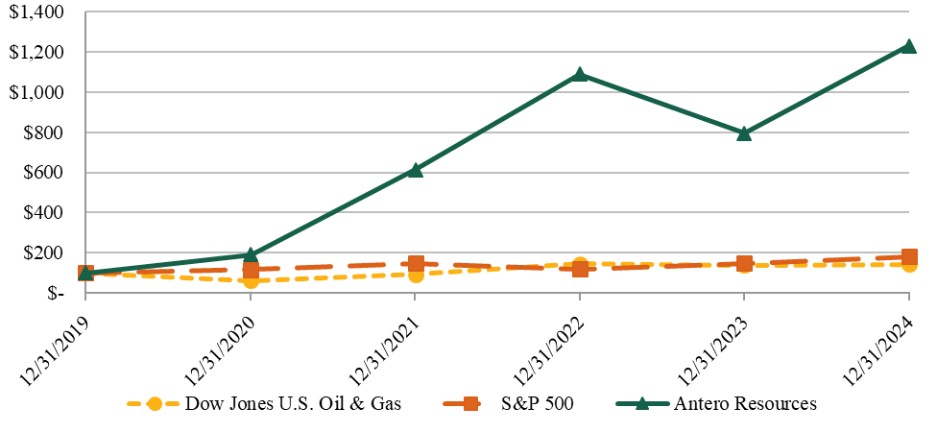World health events may materially adversely affect our business.
World health events may cause disruptions to our business and operational plans, which may include (i) shortages of employees, (ii) unavailability of contractors and subcontractors, (iii) interruption of supplies from third parties upon which we rely, (iv) recommendations of, or restrictions imposed by, government and health authorities, including quarantines, and (v) restrictions that we and our contractors and subcontractors impose, including facility shutdowns, to ensure the safety of employees and others. While it is not possible to predict their extent or duration, these disruptions may have a material adverse effect on our business, financial condition and results of operations.
Further, the effects of a world health event could negatively impact global demand for crude oil and natural gas, which may contribute to price volatility that could impact the price we receive for natural gas, NGLs and oil and materially and adversely affect the demand for and marketability of our production, as well as lead to temporary curtailment or shut-ins of production due to lack of downstream demand or storage capacity. Additionally, to the extent a pandemic, epidemic or outbreak of an infectious disease adversely affects our business and financial results, it may also have the effect of heightening many of the other risks set forth in this “Item 1A. Risk Factors.”
Terrorist attacks, cyberattacks and threats could have a material adverse effect on our business, financial condition and results of operations.
Terrorist attacks or cyberattacks may significantly affect the energy industry, including our operations and those of our suppliers and customers, as well as general economic conditions, consumer confidence and spending and market liquidity. Cyber incidents, including deliberate attacks, have increased in frequency globally. Strategic targets, such as energy related assets, may be at greater risk of future attacks than other targets in the United States. We depend on digital technology in many areas of our business and operations, including, but not limited to, estimating quantities of oil and natural gas reserves, processing and recording financial and operating data, oversight and analysis of our drilling, completion and production operations and communications with our employees and third-party customers or service providers. We also collect and store sensitive data in the ordinary course of our business, including personally identifiable information as well as our proprietary business information and that of our customers, suppliers, investors and other stakeholders. The growing regulatory landscape around data protection adds additional complexity to safeguarding this information. The secure processing, maintenance and transmission of information is critical to our operations, and we monitor our key information technology systems in an effort to detect and prevent cyberattacks, security breaches or unauthorized access. Despite our security measures, our information technology systems may undergo cyberattacks or security breaches including as a result of employee error, malfeasance or other threat vectors, which could lead to the corruption, loss, or disclosure of proprietary and sensitive data, misdirected wire transfers, and an inability to: perform services for our customers; complete or settle transactions; maintain our books and records; prevent environmental damage; and maintain communications or operations. Significant liability to the Company or third parties may result. We are not able to anticipate, detect or prevent all cyberattacks, particularly because the methodologies used by attackers change frequently or may not be recognized until an attack is already underway or significantly thereafter, and because attackers are increasingly using technologies specifically designed to circumvent cybersecurity measures and avoid detection. Cybersecurity attacks are also becoming more sophisticated and include, but are not limited to, ransomware, credential stuffing, spear phishing, social engineering, use of deepfakes (e.g., highly realistic synthetic media generated by artificial intelligence) and other attempts to gain unauthorized access to data for purposes of extortion or other malfeasance.
Our information and operational technologies, systems and networks, and those of our vendors, suppliers, customers and other business partners, may become the target of cyberattacks or information security breaches that result in the unauthorized release, gathering, monitoring, misuse, loss or destruction of proprietary and other information, or adversely disrupt our business operations. The interconnected nature of our industry heightens the risk that a cybersecurity incident affecting one of our vendors, suppliers, customers or other business partners could propagate across the supply chain, potentially causing widespread operational or financial disruptions. Although we have written policies and procedures for monitoring cybersecurity risk and identifying and reporting incidents, there can be no guarantee they will be effective at preventing cyberattacks or ensuring incidents are timely identified or reported. Some cyber incidents, such as surveillance, ransomware, or deepfake-based social engineering attacks, may remain undetected for some period of time. Advances in computer capabilities, discoveries in the field of artificial intelligence, cryptography, or other developments may result in a compromise or breach of the technology we use to safeguard confidential, personal or other information. As cyberattacks continue to evolve, we may be required to expend significant additional resources to continue to modify or enhance our protective measures or to investigate and remediate any vulnerabilities to cyberattacks. In particular, our implementation of various procedures and controls to monitor and mitigate security threats and to increase security for our personnel, information, facilities and infrastructure may result in increased capital and operating costs. While we maintain cyber insurance coverage to help mitigate financial risks associated with cyber incidents, such policies have limitations and do not cover all potential losses, such as reputational harm or regulatory fines. Accordingly, our cyber insurance may not provide coverage for all potential risks arising from cyber incidents. As cyberattacks increase globally in frequency and severity, coverage availability and affordability may further decline. A successful cyberattack or security breach could result in liability resulting from data privacy or cybersecurity
